Filters
Category
Less
Planting Time
Less
Sunlight Conditions
Less
Annual/Perennial
Less
Heirloom
Less
Plant Type
Less
Plant Height
Less
Tomato Type
Less
Pepper Heat
Less
Color
Less
Garden Environment
Less
Better Boy Tomato (2 Pack)
High yields of smooth skinned, large fruit earn Better Boy a spot as one of the most popular tomatoes grown in the US and as one of our all time best sellers. The fruit has excellent classic tomato flavor with just the right balance of acid and sugar. This is a great slicing tomato. It is widely adapted throughout the country. Grow it in a tall cage or tie to a stake for support. The indeterminate vines are resistant to verticillium wilt (V), fusarium wilt (F), and nematodes (N). Organic varieties are only available at retailers.
- Regular price
- $17.99
- Regular price
-
- Sale price
- $17.99
- Unit price
- per
Sweet Green Bell Pepper (2 Pack)
Bonnie's best hybrid sweet bell pepper! A heavy yielder of large fruits. A good all-round pepper for slicing, stuffing, and freezing. This bell produces lots of fresh bell peppers gradually over the growing season. Plants in our Alabama garden produce from June through October, yielding 30 or more peppers from each plant. (Your results will vary based on care and the length of your growing season.) This is a good-sized plant, so be prepared to stake if needed. Organic varieties are only available at retailers.
- Regular price
- $17.99
- Regular price
-
- Sale price
- $17.99
- Unit price
- per
Red Bell Pepper (2 Pack)
Sweet, juicy, nutritious red fruits add appetizing color to fresh salads and are superb for stuffing. Also great on the grill! The big, blocky peppers (they average around 4 to 6 Ounces) ripen from dark green to bright red. High-yielding plants are well adapted throughout the US. Grow your own and avoid premium prices at the grocery store. Organic varieties are only available at retailers.
- Regular price
- $17.99
- Regular price
-
- Sale price
- $17.99
- Unit price
- per
Strawberries (2 Pack)
This everbearing strawberry produces high yields of large, very sweet fruit from late spring through fall. Large, soft, deliciously sweet fruit ideal for jam, preserves, fresh eating, or desserts. Plants are cold-hardy and send out long runners. Great for containers. Plant so that crown is just above soil level.
- Regular price
- $18.99
- Regular price
-
- Sale price
- $18.99
- Unit price
- per
Best Seller
Beefsteak Red Tomato (2 Pack)
Beefsteaks are always grown for their flavor and size for slicing and summer sandwiches. This variety produces large, meaty red fruit over a long season on indeterminate plants. Because it matures late compared to many other tomatoes, it will provide a fresh harvest in the latter part of the season. This is an old favorite beloved by gardeners in the Northeast and grown throughout the country. Vigorous vines grow best in tall cages. Resistant to fusarium wilt (F) and nematodes (N).
- Regular price
- $17.99
- Regular price
-
- Sale price
- $17.99
- Unit price
- per
Banana Sweet Pepper (2 Pack)
Named for its banana-like shape, this variety bears sweet, mild banana peppers that mature from yellow, to orange, and then to crimson red. Plants fruit prolifically, easily producing up to 25 to 30 pods per plant. Banana peppers are great for frying and pickling, and are an excellent choice for making pepper rings for sandwiches. Great for containers. Organic varieties are only available at retailers.
- Regular price
- $17.99
- Regular price
-
- Sale price
- $17.99
- Unit price
- per
Italian Oregano (2 Pack)
Savor classic Italian cuisine with the flavorful leaves of this oregano. An easy-growing plant for the garden or container, Italian oregano hails from the Mediterranean region. That means it thrives with lower humidity and well-drained soil. In the garden, use this oregano as an edging plant. Plants spread when happy, rooting along the stems. Harvest leaves or stems anytime during the growing season. Flavor is most intense just before plants flower. Trim plants often to keep flower formation at bay.
- Regular price
- $18.99
- Regular price
-
- Sale price
- $18.99
- Unit price
- per
Serrano Pepper (2 Pack)
This variety is a vigorous bearer of hot, pungent, candle-shaped fruits that mature from green to bright red. Plants do well in most climates and are especially well adapted to hot, humid areas. This pepper is growing in popularity for pickling and salsa, and is the pepper of choice for making pico de gallo.Organic varieties are only available at retailers.
- Regular price
- $17.99
- Regular price
-
- Sale price
- $17.99
- Unit price
- per
German Queen Heirloom Tomato (2 Pack)
Heirloom. This old-fashioned beefsteak has large, sweet fruits that are lower in acid and quite meaty, making them perfect for slicing. The indeterminate vines will grow tall and bear fruit all summer long, so be sure to stake strongly or cage. One slice makes a great sandwich filling!
- Regular price
- $17.99
- Regular price
-
- Sale price
- $17.99
- Unit price
- per
Big Boy Tomato (2 Pack)
The name, Big Boy, is easy to remember and so is the flavor. This is a big, sandwich-type slicer with smooth, bright red fruit and a flavor that everybody likes. It bears heavily in mid-season, yet the indeterminate vines continue fruiting (though not as heavily) until frost. Plants in our Alabama test garden, where conditions are excellent, have yielded 100 tomatoes each through a 10-week harvest season. Long vines need staking, or grow the plant in a tall cage. Resistant to cracking.
- Regular price
- $17.99
- Regular price
-
- Sale price
- $17.99
- Unit price
- per
Lieutenant Broccoli (2 Pack)
Well adapted to warm weather, these plants form smooth, dark green heads on medium-sized stems with few side shoots. Heads offer classic flavor and all the vitamins and protein broccoli is known for. Water plants consistently for best yields, especially as temperatures climb. If you like Packman, you’ll like Lieutenant Broccoli.
- Regular price
- $17.99
- Regular price
-
- Sale price
- $17.99
- Unit price
- per
Lemon Balm (2 Pack)
Lemon balm, a member of the mint family, is a lovely mild herb named for the lemony scent of its leaves. Originally grown in South Europe, lemon balm is often used in combination with other herbs and is frequently found in poultry and fish dishes, desserts, and teas. It also makes a nicely scented sachet. Plant one at the edge of a gate so that when the gate opens and closes the lemony scent fill the air. Like other types of mint, it likes to spread, so a container is a great choice.
- Regular price
- $18.99
- Regular price
-
- Sale price
- $18.99
- Unit price
- per
Curled Parsley (2 Pack)
Curled parsley has beautiful, dark green leaves well known as the classic garnish for deviled eggs and an ingredient in tabbouleh (parsley salad) or white clam sauce for pasta. However, it has many more uses. Hardy through zones 7 and warmer, it is a great winter garden plant and looks beautiful in containers with pansies or other winter color. The nutritious leaves are high in iron and in vitamins A, C, and E. The high chlorophyll content makes it a natural breath sweetener, too. Frost tolerant. Great in containers.
- Regular price
- $18.99
- Regular price
-
- Sale price
- $18.99
- Unit price
- per
Red Romaine Lettuce (2 Pack)
This eye-catching romaine deserves a spot in both the vegetable and the flower garden. Colorful leaves start out green, then fade to a deep red-bronze as they mature. Red Romaine leaves bring a sweet, flavorful crunch to salads and sandwiches. The heads (if allowed to form) are thick enough to grill. Plants are slow to bolt and grow best in full sun, but will tolerate partial shade and even appreciate it in spring in hot climates. Resistant to mosaic virus.
- Regular price
- $17.99
- Regular price
-
- Sale price
- $17.99
- Unit price
- per
Pet Grass (2 Pack)
This grass is attractive to dogs and cats. They need a little grass in their diets, especially if they do not spend a lot of time outdoors, where they will often chew on whatever grass is available. This easy-to-grow grass is also called intermediate wheatgrass, but it is not the wheat from which bread flour is made. This is originally an Asian pasture grass that was introduced to the US many years ago for pasture and fodder. You can grow it in pots for your indoor pets, or plant it in beds outdoors for animals that spend time outside.
- Regular price
- $18.99
- Regular price
-
- Sale price
- $18.99
- Unit price
- per
Bush Goliath Tomato (2 Pack)
Goliath hybrid tomatoes have classic beefsteak shape and flavor with firm, light red fruit that have few seeds. In our Alabama test garden, where conditions are ideal and the harvest season is long, we harvest 70 or more fruit from each Goliath plant. The indeterminate vines are vigorous, so you will want to stake them or use a tall cage. Resistant to many diseases: verticillium wilt (V), fusarium races 1 ; 2 (FF), nematodes (N), and tobacco mosaic virus (T).
- Regular price
- $17.99
- Regular price
-
- Sale price
- $17.99
- Unit price
- per
Green Magic Broccoli (2 Pack)
Enjoy beautiful, smooth, medium-sized heads of blue-green broccoli. Plants are compact and grow quite well in containers. Don’t pull them once you’ve harvested the head, though, as plants will continue to produce lots of side shoots that are just right for snacking or sautéing. This variety has excellent heat tolerance, too. Plant in late summer for a fall harvest.
- Regular price
- $17.99
- Regular price
-
- Sale price
- $17.99
- Unit price
- per
Waxed Amaryllis Bulb
Brighten your home this holiday season with Bonnie Plants Amaryllis Bulbs! Known for producing multiple vibrant flowers, it’s an ideal low-maintenance option that requires no water. Amaryllis bulbs grow between 21 and 28 days, starting slow in early season and speeding up as the season progresses—just in time for a beautiful holiday display. Reaching heights of 16" to 28", depending on light levels, it’s a festive way to add natural beauty to your space without any fragrance.
- Regular price
- $19.99
- Regular price
-
- Sale price
- $19.99
- Unit price
- per
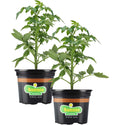
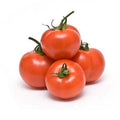


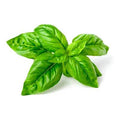 Herbs
Herbs
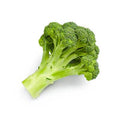 Vegetables
Vegetables
 Fruit
Fruit
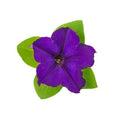 Flowers
Flowers
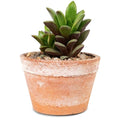 Succulents
Succulents

